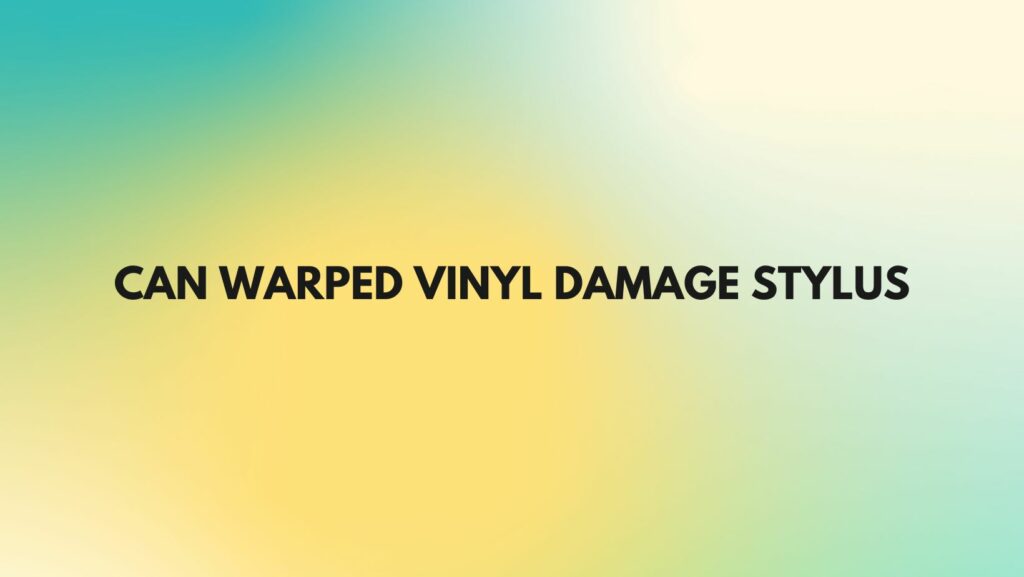Vinyl enthusiasts understand the delicate dance between a stylus and the grooves of a record, where the quality of the dance directly influences the sonic experience. However, when the vinyl takes an unexpected twist in the form of warping, concerns arise about potential damage to the stylus. In this guide, we’ll delve into the intricacies of the stylus-vinyl relationship, exploring whether warped vinyl can indeed jeopardize the health of this critical component of a turntable setup.
- The Stylus and Its Role:
The stylus, or needle, is the small, often diamond-tipped component responsible for tracing the grooves of a vinyl record. Its delicate nature and precise movement are vital for translating the intricate patterns of the grooves into the audio signals that produce the music.
- Understanding Vinyl Warping:
Vinyl warping occurs when the record undergoes physical deformations, leading to deviations from its flat, intended state. This warping can manifest in various forms, including bends, ripples, and curves, potentially impacting the stylus’s interaction with the grooves.
- Potential Damage from Severe Warps:
Severe warping can pose a risk to the stylus. As the stylus travels along the uneven surface of a warped record, it encounters variations in depth and angle within the grooves. This uneven terrain can result in the stylus skipping, jumping, or even becoming dislodged, potentially causing damage.
- Skips, Jumps, and Stylus Dislodgment:
The presence of severe warps can lead to audible issues during playback, such as skips and jumps. In extreme cases, the stylus may struggle to navigate the warped grooves, risking dislodgment from the cartridge. A dislodged stylus can cause further damage to both the stylus and the record.
- Stylus Wear and Tracking Force:
Even in the absence of severe warps, playing records on a turntable with an incorrectly set tracking force or a worn-out stylus can contribute to premature stylus wear. An unstable playing environment can exacerbate the impact of minor warps on the stylus.
- Mitigating Stylus Damage:
Mitigating potential stylus damage involves addressing the root causes. Ensuring proper turntable setup, calibration, and using a well-maintained stylus are fundamental practices. Avoiding playback on severely warped records and implementing preventative measures can further protect the stylus.
- Regular Stylus Inspection:
Periodic inspection of the stylus is essential for detecting signs of wear or damage. A damaged or worn-out stylus should be promptly replaced to prevent further harm to the vinyl records and maintain optimal playback quality.
- Retiring Severely Warped Records:
In cases where severe warping consistently hinders playback and poses a risk to the stylus, it may be advisable to retire such records from regular use. This ensures the longevity of the stylus and the overall health of the turntable.
- Stylus-Friendly Practices:
Adhering to stylus-friendly practices, such as gentle handling, regular cleaning, and proper storage, contributes to a positive stylus-vinyl interaction. These practices not only preserve the lifespan of the stylus but also enhance the overall listening experience.
Conclusion:
The symbiotic relationship between a stylus and vinyl is central to the pleasure derived from analog playback. While minor warps may not necessarily damage the stylus, severe warps can present challenges that risk stylus health and compromise playback quality. By understanding the nuances of this relationship, implementing preventative measures, and adopting stylus-friendly practices, enthusiasts can navigate the delicate dance between stylus and vinyl, ensuring a harmonious and enduring listening experience.

